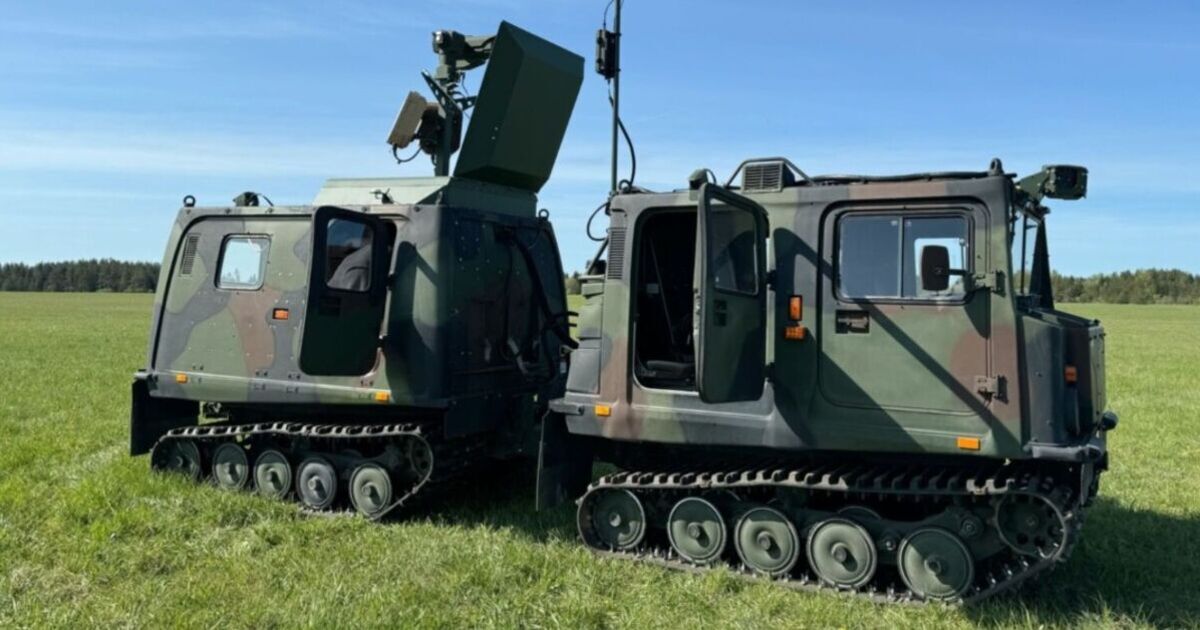

Drones could help safeguard the UK from the growing threat of Russian incursions and people traffickers. The claims, from one of Europe’s leading “drone wall” manufacturers, come at a time of mounting concern over radar blind spots, seaborne drone attacks and gaps in Britain’s ability to detect low-flying aircraft. Estonian defence firm DefSecIntel is already in talks with European partners to build a drone wall across the eastern flank of NATO, using acoustic sensors, low-level radars and interceptor drones to identify and neutralise hostile platforms. And its chief executive Jaanus Tamm told the Sunday Express that his layered detection and interception systems could be deployed around Britain to provide an affordable first line of defence.
“Our systems were originally designed to counter illegal migration across Europe,” he said. “Now they may help to keep Russian incursions at bay. And they would be ideal for the UK.” DefSecIntel’s drone wall concept combines mobile and static sensors to detect threats that would otherwise slip past traditional radar. Fast-moving units mounted on trucks, drones and even patrol boats are paired with fixed acoustic sensors and cameras, giving a layered picture of low-flying aircraft.
The company is also developing cheaper ways to bring drones down than using multi million-pound missiles. Last week it signed a deal with Latvian firm Origin Robotics, whose “seeker drones” are designed to hunt down hostile drones, alongside truck-mounted electronic warfare systems.
The system will work semi-automatically, to mitigate the need for a drone operator to man every drone - a crucial development in the event of sewarm attacks. Britain’s vulnerabilities are well known.
Just three years ago intelligence sources warned that gaps in Britain’s radar system allowed people smuggling gangs to use light aircraft without transponders to land in remote rural air strips.
One judge has even warned: “There cannot be people on duty at every single small airfield and that makes them vulnerable.”
But Russia’s decision to ramp up hybrid attacks on NATO members is also focusing minds.
With some of the Russian drones which disrupted Danish air traffic having been launched from the sea, the UK’s northern and western flanks remain particularly exposed.
“There are gaps in radar and we have to decide how to fill them,” said Air Commodore Dai Whittingham, former chief executive of the UK Flight Safety Committee.
“Seaborne drone attacks on Denmark show the sort of scenario we might face on our own flank.”Essential infrastructure such as wind farms are another potential target, vulnerable to smaller drones packed with explosives.
“Radar coverage is a patchwork quilt, and there are lots of holes in it,” said Justin Crump, of Sibylline strategic risk group.
“We just basically ignore the wind farm areas right now. That is where you fly drones around and can’t see them.”
The warnings come as Britain was excluded from talks in Copenhagen last week where EU leaders accelerated plans for a continental drone wall on NATO’s eastern borders.
“Russia will continue and we have to be ready, we have to strengthen our preparedness,” said Finnish premier Petteri Orpo.
Danish counterpart Mette Frederiksen called the drone incursions “essentially a hybrid war against Europe.”
Ministers insist the UK is investing heavily.
The Strategic Defence Review set out £4 billion for autonomous systems and a further £1 billion for digital integration.
This includes the creation of a new drone centre designed, the Ministry of Defence says, to “accelerate the use of autonomous systems across the Armed Forces, keeping us safe at home and strong abroad.”
Britain is already investing in drones through Project Octopus, a joint UK-Ukraine scheme to mass-produce Ukrainian-designed interceptor drones.
The initiative is meant to supply Kyiv with thousands of low-cost aircraft to hunt down Russian Shahed drones, but officials say it will also build manufacturing capacity inside Britain.
Mr Tamm added: “The UK-Ukraine Octopus joint programme is mainly for Ukraine because they have a huge need to counter Russian Shahed drones there.
"As a company, we welcome other subsystems or interceptors that work and can be used to take down hostile drones… They would work in combination with our systems.
"And they could be deployed within months. It’s all down to political will.”
Although DefSecIntel insists the technology itself would be relatively affordable, building even a modest “drone wall” of 50 platforms would still demand serious investment and hundreds of trained personnel.
Justin Crump, chief executive of the Sibylline strategic risk group, warned that Britain is lagging.
“We’re talking about working with Ukraine for drone wars in Eastern Europe but no one’s talking about drone walls for Britain. A drone wall can complement missile systems by focusing on smaller threats that come in low," he said.
"What Denmark saw could happen to us tonight. Denmark reacted by calling up the reserves. Who in the reserve here has been trained to knock down drones, and with what?”
He added: “We have had 30 years of peace, and we are now realistically facing something people said we’d never have to deal with again. Yet the pace of our response is glacial.
"Just last week Lady Manningham-Buller, the former head of MI5, said we were already at war with Russia.
"The truth is that Russia is already at war with us.
"The recent Strategic Defence Review identified our needs, but it assumed we had ten years to prepare.
"We don’t need it in ten years. We need it now.”